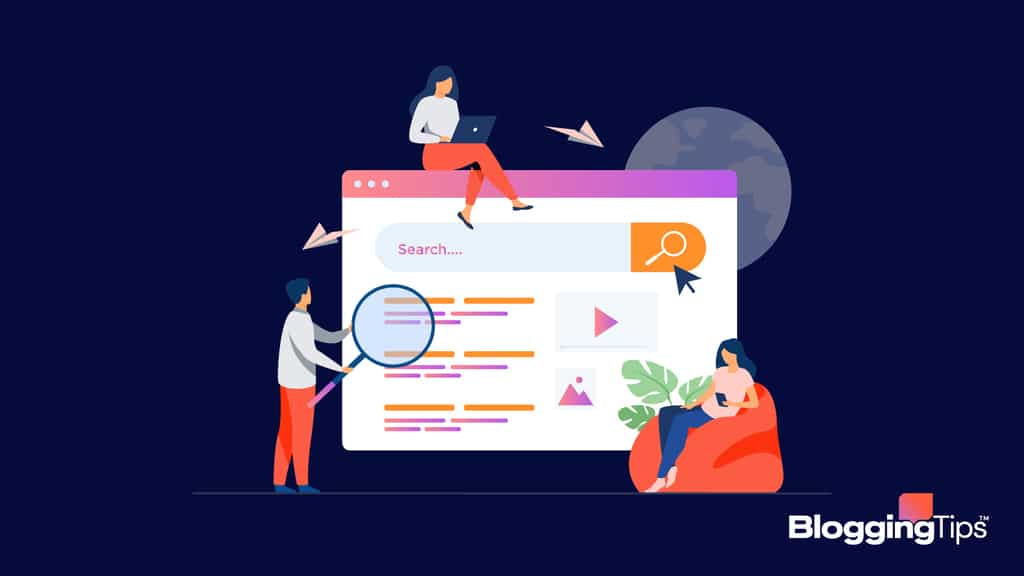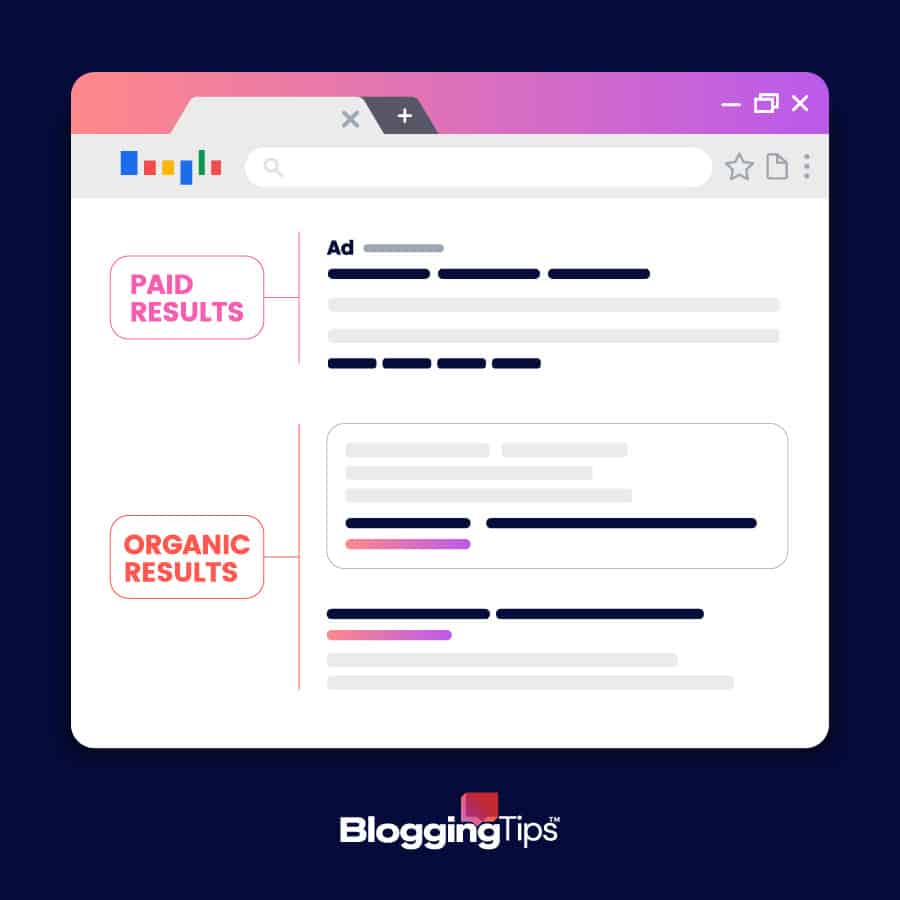
People rarely look further than the first three links on a search results page. Depending on your website’s visibility, that’s exactly what you want them to do.
That’s where search engine optimization, or SEO, comes in.
What is Search Engine Optimization (SEO)?
SEO is the art and science of making your website friendly to search engines like Google, Bing, and Yahoo. Doing so can drive organic traffic to your website that you can then convert to leads, sales, or an engaged audience.
At its most basic, search engine optimization is about making your webpage as visible as possible while moving your article higher up the search engine algorithm.
Technically, there are two types of SEO – organic SEO and Pay-Per-Click (PPC) advertising. There are notable differences between the two.
Organic SEO focuses on improving a website’s visibility in the unpaid (free) search engine results. It relies on optimizing the website content, architecture, and links to make it more attractive to search engines for relevant keywords.
The aim is to rank highly in the natural search results for targeted keywords over time, enhancing traffic without the direct cost of advertising.
Paid SEO (SEM), on the other hand, involves paying for advertisements to appear on search engine results pages (SERPs).
Unlike organic SEO, which aims to improve natural rankings, paid SEO uses pay-per-click (PPC) campaigns, Google Ads, and other paid advertising methods to instantly increase visibility and traffic.
The focus is on bidding on keywords so that ads appear in prominent positions on SERPs for those specific terms.
Organic SEO vs. Paid SEO
The main difference between organic SEO and paid SEO is whether you pay for each click/view or not. With organic SEO, you don’t. With paid SEO, you do.
Where you show up in the search results is different, as well. With paid SEO, you’ll show up in an area designated for paid results, and your website snippet will be marked as an ad.

Use Cases for Each Type
Organic SEO is good for building brand awareness, driving targeted traffic, and establishing yourself as an authority.
It takes time to work and requires a lot of effort and expertise. However, it’s best if you’re looking for long-lasting results that will cost less in the long run.
Take a recent project that I’ve been working on as an example.
As you can see from my Analytics report below, I’ve consistently done SEO over the past year. I didn’t see results initially, but as time goes on, my SEO efforts have become more valuable:

These levels of traffic are difficult to achieve without consistent dedication and patience. But once they start working, they really start paying off.
On the other hand, using paid SEO yields much different results. The traffic is nearly instant, but you pay to get it.
And unlike “the gift that keeps on giving”, paid SEO is one-and-done. If you want more users, you have to continually pay to get them.
Paid SEO can be useful for specific campaigns, such as building an email list, obtaining trial membership signups, promoting a flash sale, or increasing sales for a specific product or service.
While you will hear both of these types of SEO thrown around in the digital marketing field, when somebody refers to “SEO”, they’re typically referring to organic SEO.
How Does Organic SEO Work?
Search engines use several factors to determine which websites to rank first for any keyword or search engine result. This is because Google wants its users to get the most relevant answers and content.
Not only that, but it wants its users only to see results from trustworthy sites that provide reliable, updated information.
An organic SEO campaign relies on using SEO best practices, like creating quality content to satisfy Google’s content criteria and provide its users with the most relevant information. Google will then rank your site above those of others.
To achieve a high organic ranking, you need more than quality content, though. Link building, getting Google My Business reviews (for local SEO), and quality web design are other components of a successful SEO strategy.
I’ll talk more about the best ranking strategies in later lessons, but in any case, once Google considers you an authority in your niche, it will start ranking you well. Once you achieve high rankings for high-volume keywords, you’ll start getting a constant stream of free, organic traffic.
Since you won’t be paying for this traffic, unlike traffic you get from a Google ad, you’ll be able to enjoy a higher ROI.
Why Is SEO Important?
Since no one wants to scroll through pages of search results to answer their questions, the websites with the most foot traffic are sites that invest in SEO.
Approximately 40-60% of internet users click on the first link to answer their questions. The second and third links on a search result receive significantly less traffic. And both those results receive higher traffic than anything further down the page.
In other words, the success of your website’s search engine optimization dramatically affects whether or not anyone sees your content.

